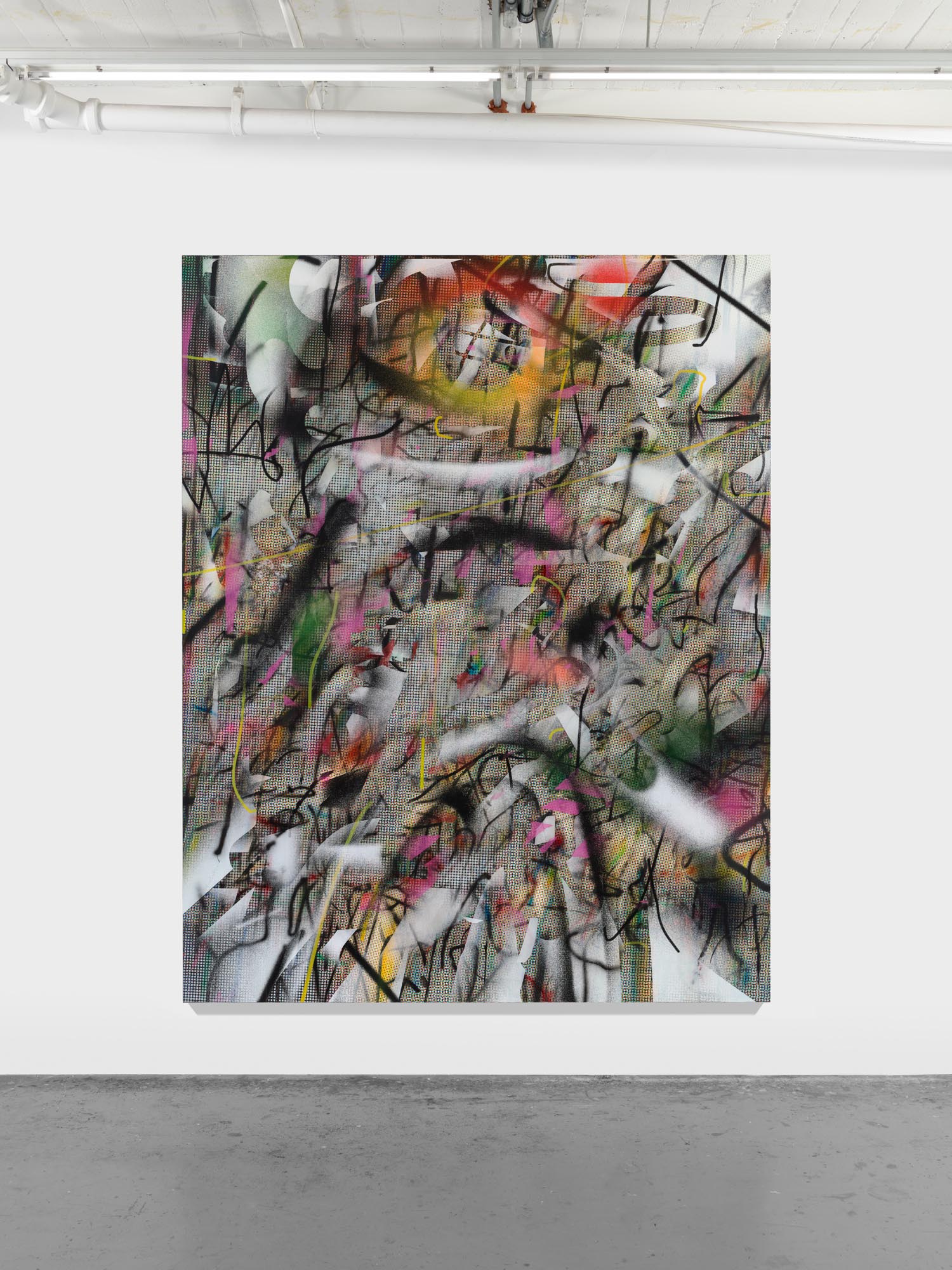Julie Mehretu’s large-scale painting “Metoikos (half extinguished beam 07.04.21,7pm)” is part of her latest cycle of works “Metoikos”, which deals with the human condition itself as well as migration and politics. In ancient Greece, a so-called metoikos (ancient Greek μέτοικος métoikos, German ‘Ansiedler’) was a stranger living permanently in the respective city, who did not enjoy local citizenship there and thus had no political participation rights.
As is typical of Mehretu’s artistic practice, “Metoikos (half extinguished beam 07.04.21,7pm)” is also based on a photographic template: in the original image (see appendix), one recognizes a man at a demonstration on the U.S./Mexican border who is being tugged at from two sides: on the left, the group of demonstrators; on the right, some highly armed police officers who want to separate the man from the ranks of the demonstrators. The photo refers to a report from 2018, at the time of Donald Trump’s legislature, when there was a particularly harsh migration policy in the US (see link to an article about the said demonstration).
The entire cycle of works “Metoikos” is based on just such images of current events, in which Mehretu also draws references to internment camps for immigrants, social upheavals and environmental disasters. These photos, which the artist sometimes keeps in her studio for months or even years before they become starting points for new works, form the “DNA” of her painting. With the help of Photoshop, the artist distorts the images beyond recognition, she enlarges the respective photo so that only a pattern or grid of pixels remains, sometimes combines them with other images and transforms them into multi-layered compositions by means of color before they are printed on canvases by inkjet. The technique is very complex and multi-layered, she sometimes works with the marker already on the computer, but then again plays with the gesture of the hand, acting on the canvas or on the printed support and handling screen printing or airbrush techniques. Under the mass of turbulent, luminous marks, the original image, the photograph, disappears, but “the pain and the source of the image,” according to Mehretu, remain.
Julie Mehretu, herself born in Addis Ababa in 1970, now lives in New York and variously explores the abstraction of primordial human themes in her artistic practice. Her new paintings convey a sense of impermanence: on clear, saturated backgrounds, restless black lines, color eruptions, and print grids collide with luminous shapes and fragments that seem to hover like ghostly relics above the intricate composition. For Julie Mehretu, abstraction is a form of unknowing and potential that points to something beyond language.
– Gabriele Knapstein

